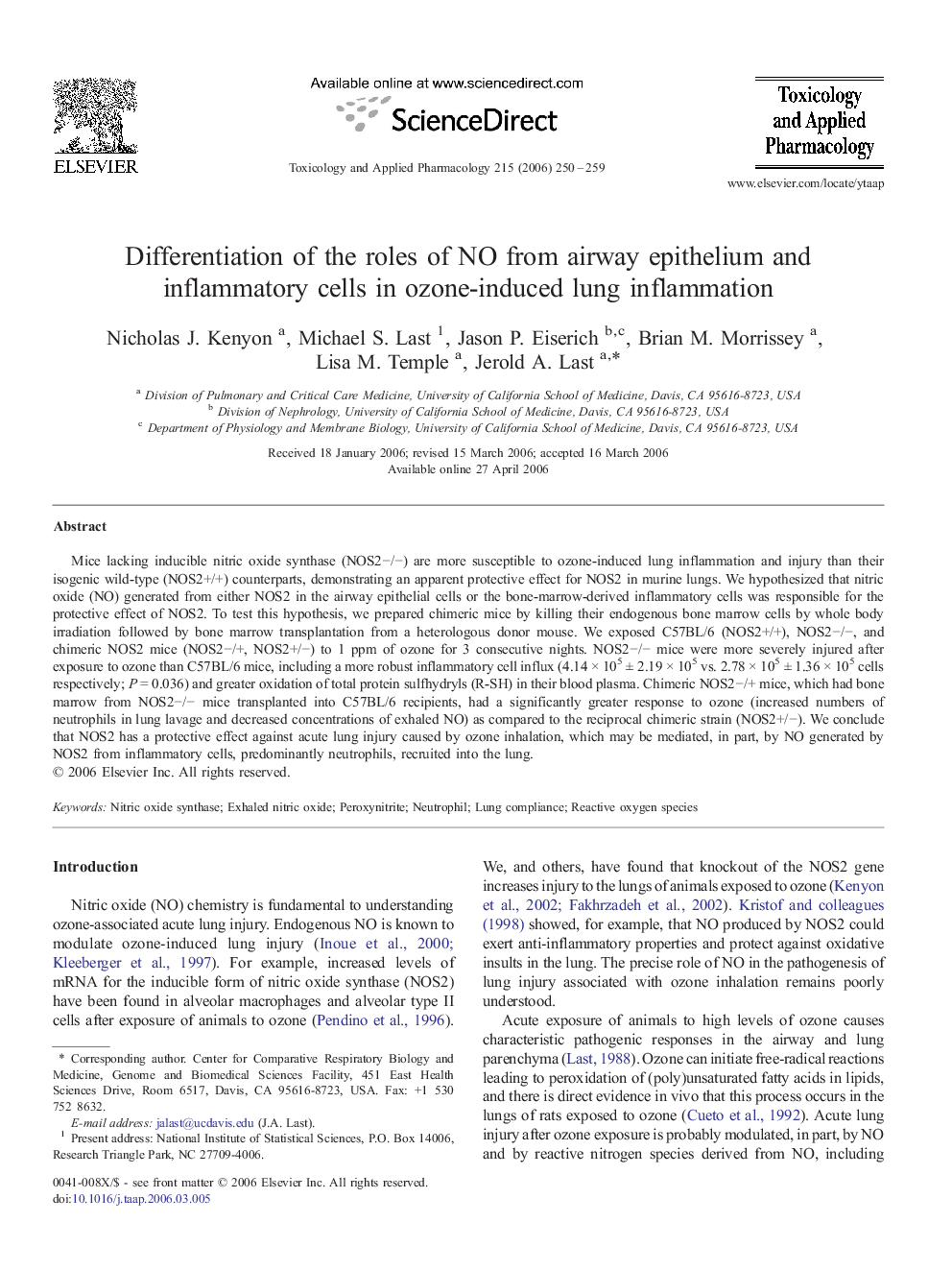| Article ID | Journal | Published Year | Pages | File Type |
|---|---|---|---|---|
| 2571612 | Toxicology and Applied Pharmacology | 2006 | 10 Pages |
Mice lacking inducible nitric oxide synthase (NOS2−/−) are more susceptible to ozone-induced lung inflammation and injury than their isogenic wild-type (NOS2+/+) counterparts, demonstrating an apparent protective effect for NOS2 in murine lungs. We hypothesized that nitric oxide (NO) generated from either NOS2 in the airway epithelial cells or the bone-marrow-derived inflammatory cells was responsible for the protective effect of NOS2. To test this hypothesis, we prepared chimeric mice by killing their endogenous bone marrow cells by whole body irradiation followed by bone marrow transplantation from a heterologous donor mouse. We exposed C57BL/6 (NOS2+/+), NOS2−/−, and chimeric NOS2 mice (NOS2−/+, NOS2+/−) to 1 ppm of ozone for 3 consecutive nights. NOS2−/− mice were more severely injured after exposure to ozone than C57BL/6 mice, including a more robust inflammatory cell influx (4.14 × 105 ± 2.19 × 105 vs. 2.78 × 105 ± 1.36 × 105 cells respectively; P = 0.036) and greater oxidation of total protein sulfhydryls (R-SH) in their blood plasma. Chimeric NOS2−/+ mice, which had bone marrow from NOS2−/− mice transplanted into C57BL/6 recipients, had a significantly greater response to ozone (increased numbers of neutrophils in lung lavage and decreased concentrations of exhaled NO) as compared to the reciprocal chimeric strain (NOS2+/−). We conclude that NOS2 has a protective effect against acute lung injury caused by ozone inhalation, which may be mediated, in part, by NO generated by NOS2 from inflammatory cells, predominantly neutrophils, recruited into the lung.
